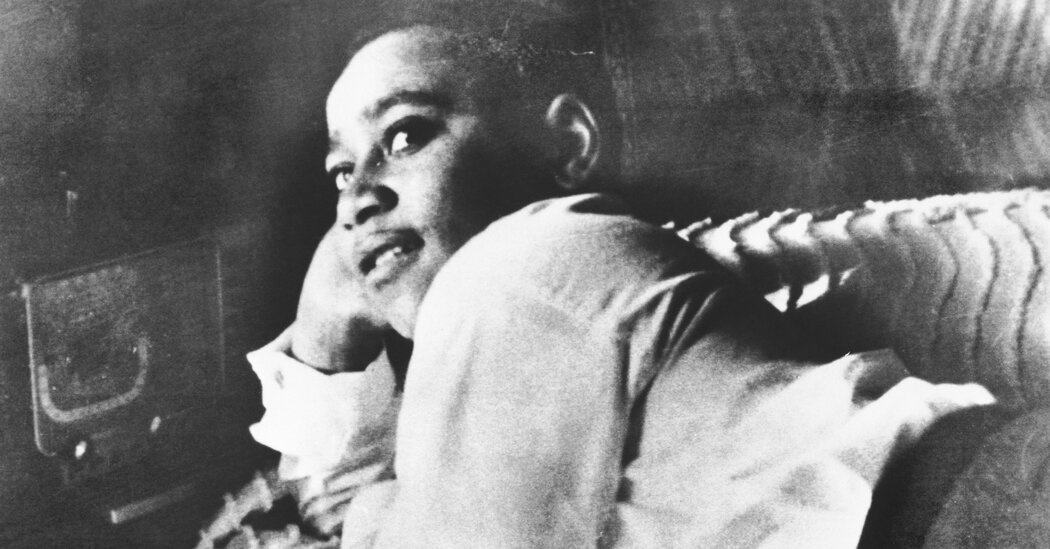A team of researchers including relatives of Emmett Till, the 14-year-old Black boy who was abducted and murdered in Mississippi in 1955, has discovered an unserved arrest warrant for the white woman whose accusations led to his gruesome death.
The document was found last week in the basement of a courthouse in Greenwood, Miss. It does not constitute major new evidence in the case, which horrified but galvanized Black Americans at the time and helped lead to the civil rights movement.
But those still working on Emmett’s behalf said that the discovery added to their understanding of the legal drama surrounding his death, and that they hoped it would provide a basis for a new investigation. The woman, Carolyn Bryant Donham, was never charged in the case. She is now in her 80s and was living in North Carolina as recently as May, according to public records. She did not immediately respond to a request for comment.
Ms. Donham was married to Roy Bryant at the time of the killing. Mr. Bryant and his half brother J. W. Milam murdered Emmett days after the teenager was said to have whistled at Ms. Donham during an encounter at the couple’s store. The two white men were acquitted by an all-white jury but later confessed to the killing. They have since died.
The newly discovered warrant, issued by the sheriff of Leflore County, Miss., and dated Aug. 29, 1955, charges the two men and Ms. Donham, identified as Mrs. Roy Bryant, with Emmett’s kidnapping. The current clerk of the Leflore County Circuit Court, Elmus Stockstill, certified its authenticity.
An affidavit attached to the warrant says that the three did “willfully, unlawfully and feloniously and without lawful authority, forcibly seize and confine and kidnap Emmitt Lewis Tell,” misspelling the boy’s surname and his middle name, Louis.
A note on the back of the warrant signed by a local sheriff says Ms. Donham was not arrested because she was not located in the county at the time, said Keith A. Beauchamp, a filmmaker who directed a 2005 documentary about the killing and helped find the warrant.
He called the discovery “a jackpot” and wrote in a text message to The New York Times: “I hope that the authorities will do the job they were suppose to do in 1955.”
Although the document does not appear to have been rescinded, experts said it was unlikely that Ms. Donham would be arrested based solely on the warrant.
“Relying upon a 67-year-old warrant, while it’s an interesting academic exercise, I think would be unsound police work,” Ronald J. Rychlak, a law professor at the University of Mississippi and an expert in criminal procedure and Mississippi criminal trial practice, said in an interview. “Why would you rely on a 67-year-old warrant if you think you have the cause today to justify it?”
Efforts to revive the case by the Justice Department foundered in 2007 and again last year, when federal officials said there was not enough evidence to pursue charges. The case had been reopened after a historian said in a 2017 book that Ms. Donham had recanted parts of her accusations against Emmett, including that he had grabbed her and made sexually suggestive remarks.
In a 1956 article in Look magazine, Mr. Bryant and Mr. Milam confessed to killing Emmett. Ms. Donham later divorced Mr. Bryant, who died in 1994. Mr. Milam died in 1980.
Mr. Beauchamp, the documentary filmmaker, has researched the case for decades, and started scouring the courthouse this year for records that pertained to the kidnapping. He was joined by Melissa Earnest, a criminal justice student; Deborah Watts, a cousin of Emmett’s who leads the Emmett Till Legacy Foundation; Ms. Watts’s daughter Teri; and the Till family’s lawyer, Jaribu Hill.
The group visited the courthouse on June 21 and, to their shock, found the warrant.
“There were a lot of tears in the room,” Mr. Beauchamp said.
Emmett Till was born in 1941 in Chicago, where he grew up. He was an only child, nicknamed Bobo, and lived with his mother and other relatives in a middle-class Black neighborhood.
His encounter with Ms. Donham occurred in August 1955 while he was staying with relatives in the Mississippi Delta. During a visit to Mr. Bryant and Ms. Donham’s store, he bought bubble gum and passed the money into Ms. Donham’s hand instead of leaving it on the counter, as white Mississippians generally expected Black people to do at the time. Ms. Donham later testified that she went to get a pistol, and one of Emmett’s cousins, who was with him, said Emmett then whistled at Ms. Donham. Emmett, the cousin and a friend quickly left.
Days later, Mr. Bryant and Mr. Milam responded by abducting Emmett from bed at his relatives’ home at night. They tortured him, shot him, tied a 75-pound fan from a cotton gin around his neck and tossed his body into the Tallahatchie River. When he was found, he was unrecognizable, with a crushed skull and a disfigured face.
Photographs of his body published in Jet magazine and an open-casket funeral in Chicago rocked the nation. Weeks later, Rosa Parks refused to give up her seat on a segregated bus in Montgomery, Ala., another seminal moment in the civil rights movement.
Years later, when asked why she refused to move to the back of the bus, she answered, “I thought of Emmett Till and I couldn’t go back.”
Sheelagh McNeill contributed research.
